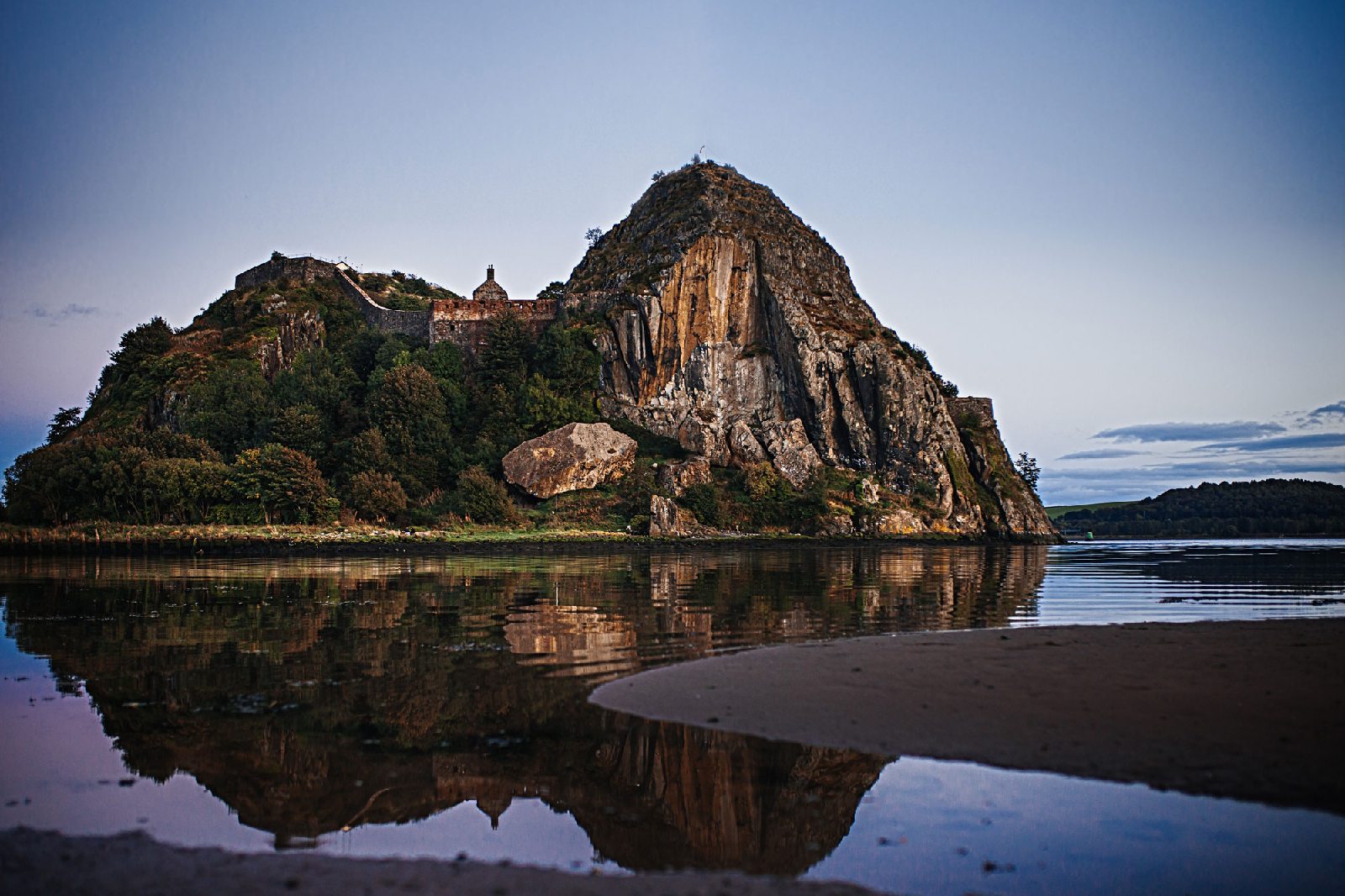Dumbarton Rock
I once identified Geoffrey of Monmouth's Uther battle of Mount Damen with The Roaches:
While exploring the whereabouts of this battle, I noticed the context was purely northern, i.e. all of Uther's battles were confined to northern England and Scotland.
Mt. Damen was particularly important as it was at this site that Gorlois made his first appearance. Gorlois is a character Geoffrey conjured from Uther's gorlassar epithet.
One of the primary reasons for choosing The Roaches for Mt. Damen was Geoffrey's description of the place as being very steep, with jagged rocks well suited to be the lairs of wild animals.
But in looking over the Galfridian account of Mt. Damen again, I think I might have missed something very important: it is followed immediately by military action at Alclud.
Alclud is, of course, the Rock of Clyde or Dumbarton Rock. We find Alclud in the Irish account of Ceredig Wledig called 'Aloo' or, simply, 'the Rock.'
Could it possibly be that Damen is a distant echo of the Damnonii of Strathclyde? Ancient forms for the tribal names of both the northern and southern Dumnonii tribes can be found here:
If so, the "rock" of Alclud would nicely correspond to Geoffrey's rocks at Mt. Damen.
Gorlois as Duke of Cornwall at Mt. Damen would then make eminent sense, as Cornwall was part of southern Dumnonia, which could be a mistake for northern Dumnonia.
The whole story of Igerna and Arthur's birth is copied from that of the begetting of Mongan (an Irish chieftain ultimately killed by Arthur son of Bicoir the Briton). Mongan's mother was Caintigerna, a name mistakenly or intentionally truncated as Igerna. The begetting of Mongan happens in the context of Aedan of Dalriada's Degsastan battle. Yes, the same Aedan who had a son or grandson named Artur.
CONCLUSION:
Uther starts out at York, goes to the hill of the Damnonii, i.e. Alclud, then later goes to Lothian. His death at St. Albans is an error for Albany, where he was said to have been just before going to St. Albans to die.

No comments:
Post a Comment
Note: Only a member of this blog may post a comment.